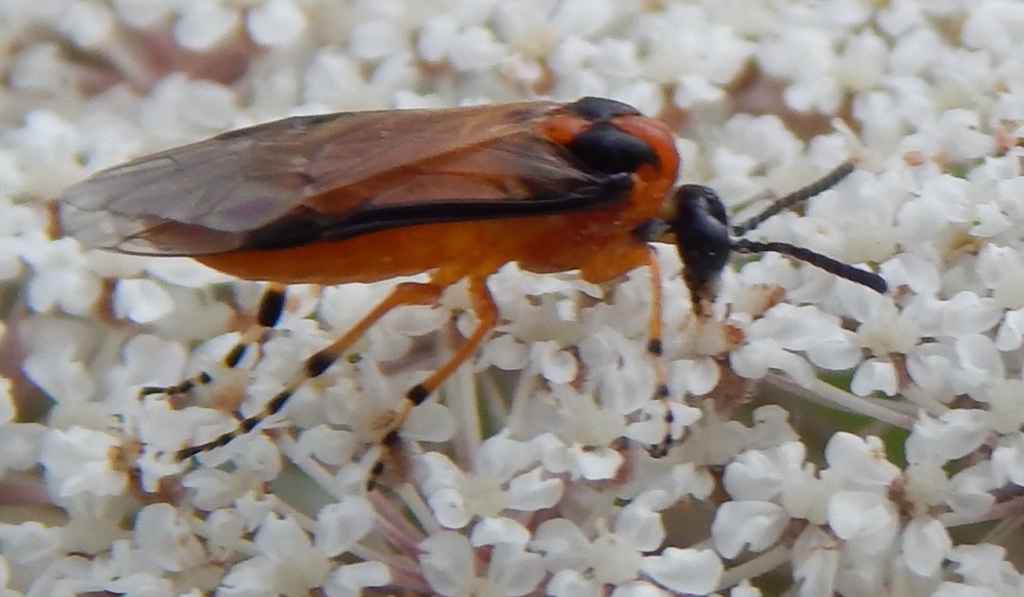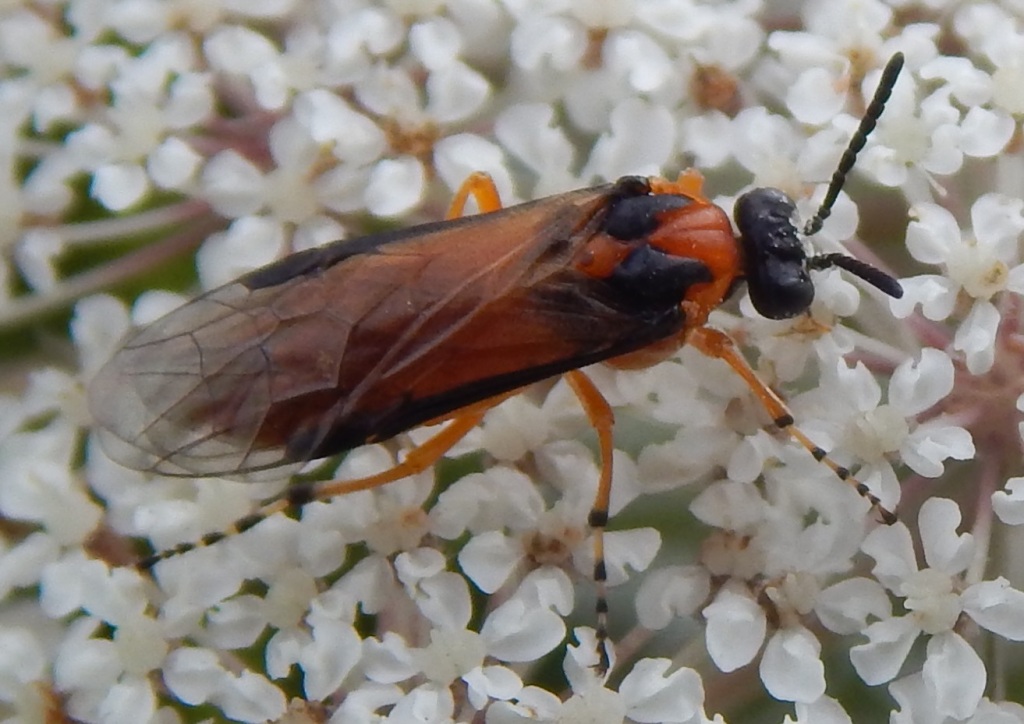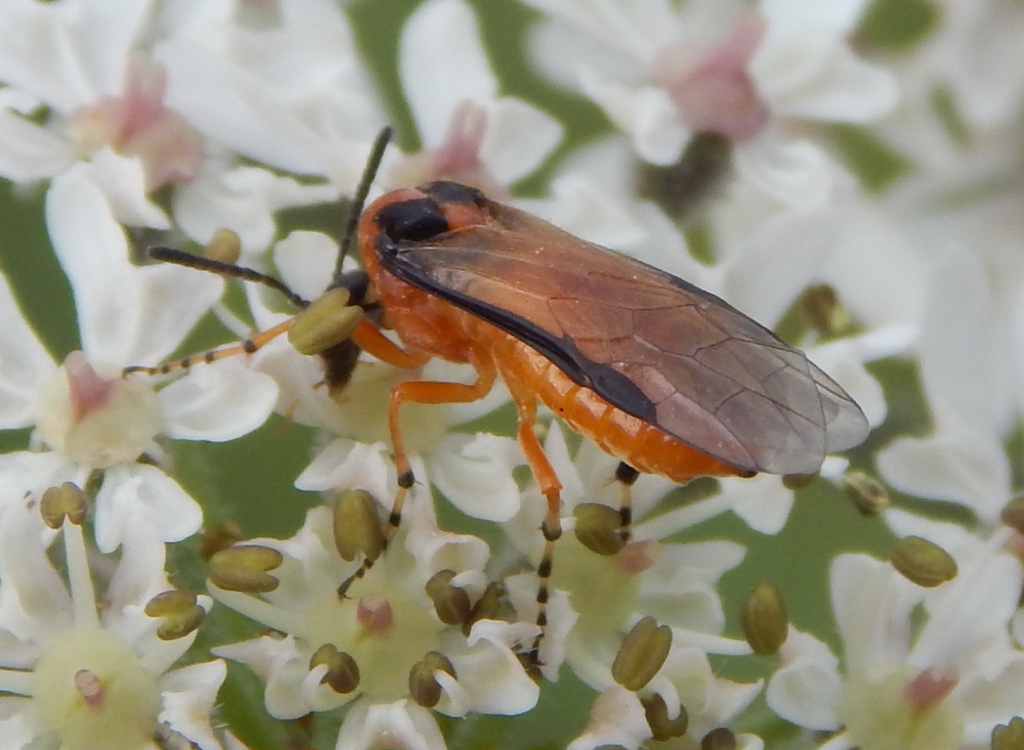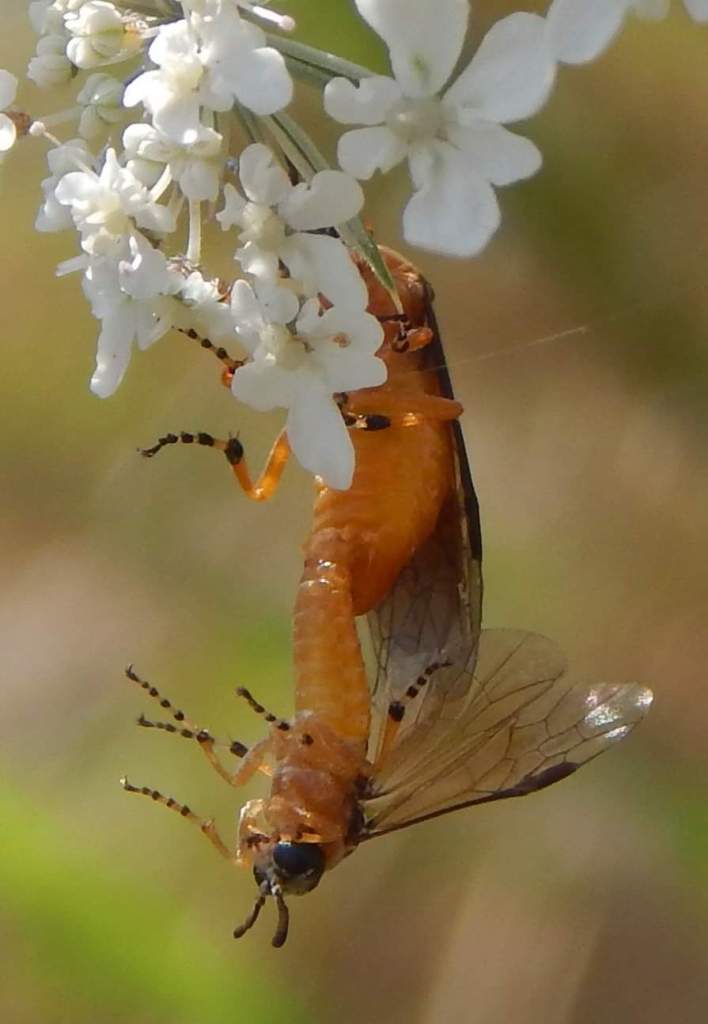
[046] Athalia rosae, the Turnip Sawfly
Introduction
Athalia rosae, the Turnip Sawfly is a common sawfly found in Britain. It has been the subject for scientific studies about haplodiploid reproduction in Hymenoptera (See below.)
It is also called the Cabbage Leaf Sawfly or Beet Sawfly.
Taxonomy
Kingdom – Animals
Phylum – Arthropods
Class – Insects
Order – Hymenoptera (Ants, Bees and Wasps – and Sawflies)
Suborder – Symphyta (Sawflies and others)
Superfamily – Tenthredinoidea
Family – Tenthredinidae
Genus – Athalia
Scientific Name – Athalia rosae
Name
This sawfly, as a larva, feeds on turnips and other Brassica family plants.
All I can find about Athalia is that it may be a Latin woman’s name. They got it wrong with ‘rosae’. It’s not a rose sawfly.
Description
In many ways this species is similar to [036] Arge Pagana. It has orange and black markings with distinctive diamond-shaped ‘shoulders.’
(It is sometimes useful to use informal anthropomorphic terms like ‘shoulders,’ rather than strict biological terms.)


From the side it has the same dumpy orange look as the Rose Sawfly but the black markings on the legs are also very distinctive.

Habitat
Athalia rosae is common and widespread as a resident in England and also migrates in large numbers from Europe. It feeds on many plants in the Brassicaceae family. Adults feed on nectar. It can be a serious pest for many crops.
Other Notes
We have met haplodiploidy in [029] Honey Bee.
It applies to all species of Hymenoptera but can get more complicated. Basically, fertilized eggs get two sets of chromosomes and develop into diploid females; unfertilized eggs produce haploid males.
For some species the female has a quantity of stored sperm within her and can control whether she lays fertilized or unfertilized eggs.
In some species there is also a single gene within the chromosomes determining sex – so that occasionally a (fertilized) diploid offspring can develop into a male. Initial studies of this phenomenon come from sister-brother matings of Athalia rosae.

See also
There are many species of sawfly found in Britain but we will not meet any more. You have already seen [036] Rose Sawfly.
